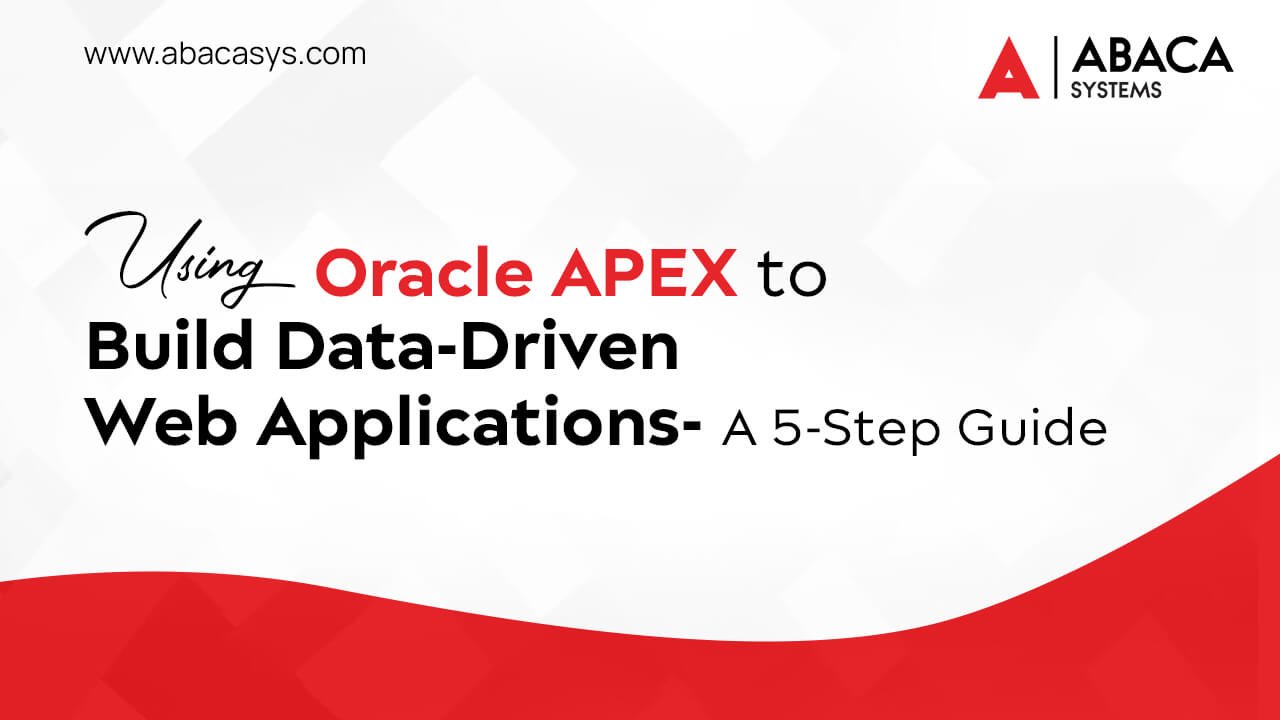Using Oracle APEX to Build Data-Driven Web Applications: A 5-Step Guide

Data-driven applications are a hot topic in the software industry these days, and for a good reason: they allow you to take a higher degree of control over your project and reduce the chances of making mistakes due to technical constraints. But how do you build such an application with Oracle APEX Software Development Company? That’s exactly what we will show you in this 5-step guide.
What is a Data-Driven Web Application?
A data-driven web application is a website that uses data from an external source to generate dynamic content. This means that the page’s content will change based on the value of certain parameters, such as an ID number or email address.
With Oracle APEX, you can build a robust data-driven web application that provides your users with access to the information they need to make informed decisions.
How Do I Build a Data-Driven Web Application with Oracle APEX?
There are five simple steps that you can follow to build a data-driven web application with Oracle APEX:
Step 1: Define Your Data Model
The first thing you need to do before building your database is to define it properly. This means that you need to ensure that every piece of information in your database represents something real and tangible. It is crucial to consider the data types for each field. This decision impacts how the data is stored and queried later on. It is important to determine whether a field should be a string, integer, date/time, or other data type. For example, if you are building an online store website for sale items, each product should have its unique identifier (ID) number, which can be used throughout all aspects of the site.
You can also use this ID number to link with other tables in the database, like customer records and product records. If it is a product record, when a customer purchases a product from your website, they can enter their credit card details and the product ID number, which will be stored in the payment table.
Step 2: Create Fields
You will then need to create fields for each piece of data that you want to store in your database. The field names should be very descriptive so that they are easy to read and understand by users who access the data through reports or queries. You should also provide users with a label or description, so they know what each column means before selecting it from a report or query result list.
When creating fields in the data model , it’s also important to consider adding constraints to the data. Constraints can be used to make certain fields required or limit the length of a text field, among other things. This can help ensure data integrity and prevent errors down the line.
Step 3: Define Relationships Between Tables
Next, you will need to define relationships between your tables so that when one record is created in one table, another record will automatically get updated in another table without any additional work by users on their end. For example, if two different types of products were being sold at the same time, you would want to be able to show those items as being sold together within your application.
For this step, Oracle APEX provides a powerful tool called “SQL statements” such as JOINs, INNER JOINs, LEFT JOINs, and OUTER JOINs, that you can use to create these relationships between tables. Each of these types of joins serves a different purpose and can impact the resulting data set in unique ways.
You can also use SQL statements to create relationships between different tables. It’s important to note that most of these SQL statements will be run as part of a job and therefore are not executed by individual users; rather, they are run against all users logged onto the database at that time.
Step 4: Test Your Data Model
Once you have an accurate and consistent data model, you can start testing it against real data. You do this by creating test data and then comparing your existing model to that test data.
Oracle has a tool called the Business Intelligence Development Studio (BIDS) that allows you to create tests against your models. BIDS can also be used to run reports, charts, and other tools that help evaluate your model’s performance.
BIDS has several pre-built reports, so you may not need to create any new ones. But if you want to create custom reports, there are several ways to do it. One way is to create a report using SQL*Plus and then copy the generated SQL into BIDS’s Report Builder window. Another option is to use BIDS’s Report Designer tool, which allows you to build reports using drag-and-drop functionality or dragging objects from one window into another. Or, if you’ve already got your SQL code ready, copy and paste it into the Editor window in BIDS!
Step 5: Build the Data-Driven Web Application Using Oracle APEX
The last step is to build a data-driven web application using Oracle APEX. With Oracle APEX, a proficient Oracle APEX software development company can design and build data-driven applications using industry standards like HTML5, JSON, XML, and SOAP or RESTful services. It also supports all versions of databases, including SQL Server and MySQL.
Many tools available in the market today allow you to create interactive web applications, but few are as easy to use as Oracle APEX. This can be used by both beginners and professionals alike and offers many advanced features, such as the ability to create complex forms and reports, process data from multiple sources, create charts, graphs, and dashboards, upload files from local drives or remote servers, and much more!
Additionally, Oracle APEX supports various deployment options, such as deploying the application to a local web server or to the cloud.
In The End
In conclusion, building a data-driven web application using Oracle APEX is a simple process that can be broken down into above five easy-to-follow steps. With Oracle APEX, you can create highly interactive web applications that support industry standards and offer advanced features such as complex forms, reports, charts, graphs, and dashboards.
Abaca Systems is an industry-leading Oracle APEX software development company. Our team of experienced developers and consultants can help you build a successful data-driven web application using Oracle APEX. So, if you’re looking to create a highly functional and user-friendly web application, don’t hesitate to contact us and let us help you achieve your goals.
